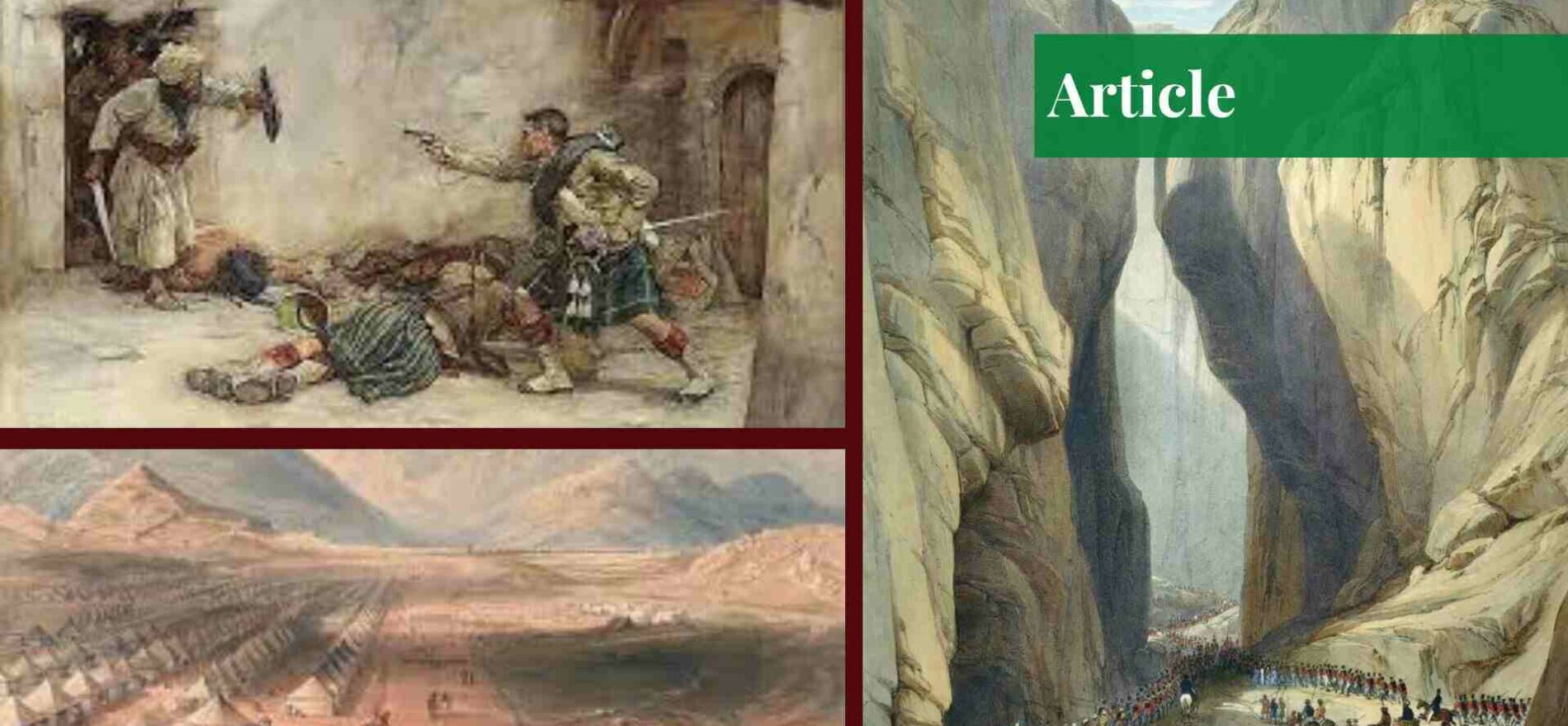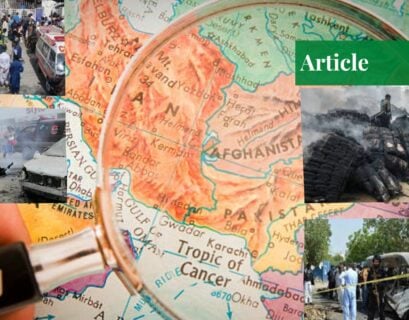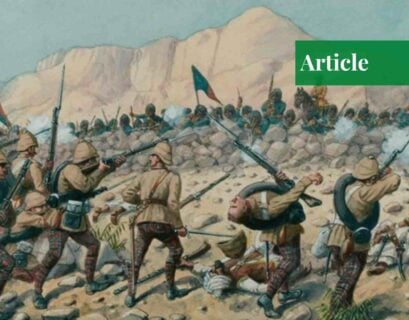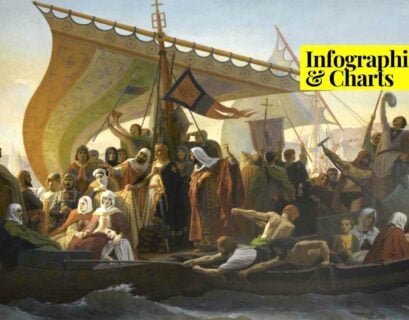Introduction
“Life without liberty is far worse than death.” – Hamid Karzai
Afghanistan’s land is a true depiction of how significant liberty is. Its leaders, soldiers, and public fought many wars to escape the prison of world powers. Its history of war dates far back to the nineteenth century. The First Anglo-Afghan War (1839-1842) set the stage for the Afghans’s journey to freedom. Their resilience, courage, strategy, and perseverance—which are still encapsulated in them—resulted in their victory.
History of the First Anglo-Afghan War
In the 19th century, Britain and Russia were having a cold war in the region of Central Asia surrounding the areas of Iran, Afghanistan, Tajikistan, and Uzbekistan. This confrontation was called the “Great Game.” The Russo-Persian wars in 1837-1838 were a major concern for British India. To terminate the further progress of the Russians, having an Afghan regime that could protect British India was very significant. This concern led to the invasion of Afghanistan by Britain in 1838.
Dost Muhammad Khan became the ruler of Afghanistan in 1826. He had to balance his inclination between both of the superpowers at that time. Britain, however, found him hostile and, considering his inability to repress the Russian invasion, thought of regulating Afghan affairs through direct control. It was concerned with installing its desired leader, Shah Shuja, in Afghanistan. However, the British faced extreme resistance over their occupations and the installation of Shuja. Nonetheless, the British had to make this grave decision to protect India from Russian invasion and to appease Sikhs who were surrounding Indian Punjab.
Indus Army Trek
The Army of the Indus, which was composed of 20,000-strong British-Indian forces, moved through the Bolan and Khojak Passes in 1839 under the command of General Sir John Keane.

Despite the difficult terrain and aggravation by tribesmen, they completed the trek. As the British Army reached Kandahar in April, the city’s ruler, the brother of Dost Mohammed, escaped to Kabul. Finally, the British forces took control of Kandahar and marched towards Kabul.
Battle of Ghazni
Ghazni, which was called a gateway to Kabul, was a major obstruction to entering Kabul. The absence of heavy artillery to break its strong walls was a significant challenge for the British. However, with the aid of Mohan Lal, a Kashmiri interpreter and spy, and assistance from Captain Sir Alexander Burnes, the Britishers learned that one of the gates was weakly guarded. They finally succeeded in assaulting it on July 23, 1839. This was termed the Battle of Ghazni, which cost many lives.

200 British soldiers and 500 Afghan soldiers died, and more than 1,600 were captured. The region of Ghazni was well supplied, which helped in the British march towards Kabul. As Britishers reached Kabul, Dost Muhammad left the city, and Shah Shuja was formally crowned in August. After installing Shah Shuja, the British planned to withdraw many soldiers back to India, knowing how difficult it would be to maintain their presence in Kabul.
Agitation in Kabul
Limited British military and political envoys were left in Kabul. As the Britishers reduced the money supply to tribal leaders, the British Army and Shah Shuja started facing public discontent. The British people’s haughtiness and sexual scandals further provoked anger. The British leadership was under the command of Sir William Hay MacNaghten, who was a bureaucrat.
Instead of setting camp in the powerful Bala Hissar Fort, he made the soldiers’ cantonment in a subpar location. Subsequent events proved that his decision was wrong. The discontentment in Kabul rapidly raised insurgency under the leadership of Muhammad Akbar Khan, Dost Muhammad’s son. This revolt resulted in the deaths of Sir William MacNaghten and the other British diplomats.
Retreat from Kabul
The British troops, stationed at MacNaghten’s perceived safe spot (a location surrounded by mountains), were fired at by the Afghan snipers who were hidden in the hills. The loss of supplies (food and ammunition, etc.) and communication meant that the city was no longer under the control of the British. This forced the British to make a deal for withdrawal with the Afghans. British commander Sir William Elphinstone negotiated their withdrawal with Akbar Khan by surrendering cannons and gunpowder reserves. Upon getting permission to retreat safely towards India, 4,500 Indian and British soldiers and camp followers consisting of 12,000 people marched out of Kabul towards Jalalabad in 1842.
In this turmoil, Afghans raided their camels and took hostage 12 wives and 22 children. The British were left with neither supplies nor tents. Many people died of hypothermia. Only 4,000 survivors out of 16,500 were left by January 10, 1842. Elphinstone was arrested on January 12 while negotiating a ceasefire with Akbar Khan. Later, he died of dysentery. Thus, the withdrawal from Kabul was the most embarrassing moment in Britain’s history, as only one European, Dr. Brydon, was able to reach Jalalabad on his lame pony. In the meantime, Shah Shuja was killed in April 1842. This deadly march marked the end of British occupation in Afghanistan.
Back to Kabul for Retribution
As the British got to know about their embarrassment and treatment of their people, the British sent an army under the command of Major-General George Pollock. This army, aimed at recapturing Kabul, was referred to as the Army of Retribution. He became the first general in history who successfully commanded an army via Khyber Pass in April 1842. This army was on a mission to preserve British goodwill and honor in the area. Another objective was to liberate the British hostages from the Afghans.
After defeating Akbar Khan at Tezin, the army entered Kabul in September 1842. The army then freed the British hostages which comprised 85 soldiers, 10 women, and 11 children. On October 9, for retribution, Kabul’s Great Bazaar was set on fire and demolished by the British. This revenge was followed by a series of rapes, thefts, assaults, etc. After destroying every nook and corner, the British forces marched out of Afghanistan in October 1842.
By this time, it had become obvious that even a puppet emir needed the consent of the local tribal leaders to rule. Accordingly, the British found Dost Mohammad, who was in British custody since November 1840, an appropriate leader to rule Afghanistan. Dost Mohammed Khan came back to Afghanistan and took charge of the throne in 1843. In 1855, the Treaty of Peshawar was signed between British India and Afghanistan to declare respect for the territorial integrity of both countries and to regulate relations between the two. This led to the formation of boundaries that had a long-lasting impact on this region. Dost Muhammad remained the ruler till his death in 1863.
Impacts
The British paid a high price for their involvement in the war in Afghanistan. The war hadn’t cost them just fifteen million pounds sterling but also 20,000 lives in four years of military disaster. The confidence regarding imperialism and the honor of the armed forces of the East India Company was also dented. But this defeat hadn’t curtailed the British Army’s ambitions; rather, they shifted their concerns to defeating the Sikh Empire in the region of Punjab.
Successfully capturing Punjab boosted their morale and despite signing a peace treaty with Dost Mohammad, the Great Game persisted as two more wars, the Second Anglo-Afghan War and the Third Anglo-Afghan War occurred in the 20th century. However, Afghanistan remained independent and unconquerable.
Conclusion
The results of the First Anglo-Afghan War were very broad. Neither the Russians nor the British were able to control the adverse region, so the British decided to follow the confined policy. However, this event pioneered a sense of distrust between Afghanistan and the British Empire, which led to two more Anglo-Afghan wars. So, based on the historical events and the recent ones, we can state that Afghanistan is a “graveyard of empires” as foreign powers have historically struggled to employ long-term control. Thus, the First Anglo-Afghan War, the future wars, and the American invasion of Afghanistan have made it very clear: nobody can rule Afghanistan without the consent of the local tribal leaders.
If you want to submit your articles, research papers, and book reviews, please check the Submissions page.
The views and opinions expressed in this article/paper are the author’s own and do not necessarily reflect the editorial position of Paradigm Shift.


















